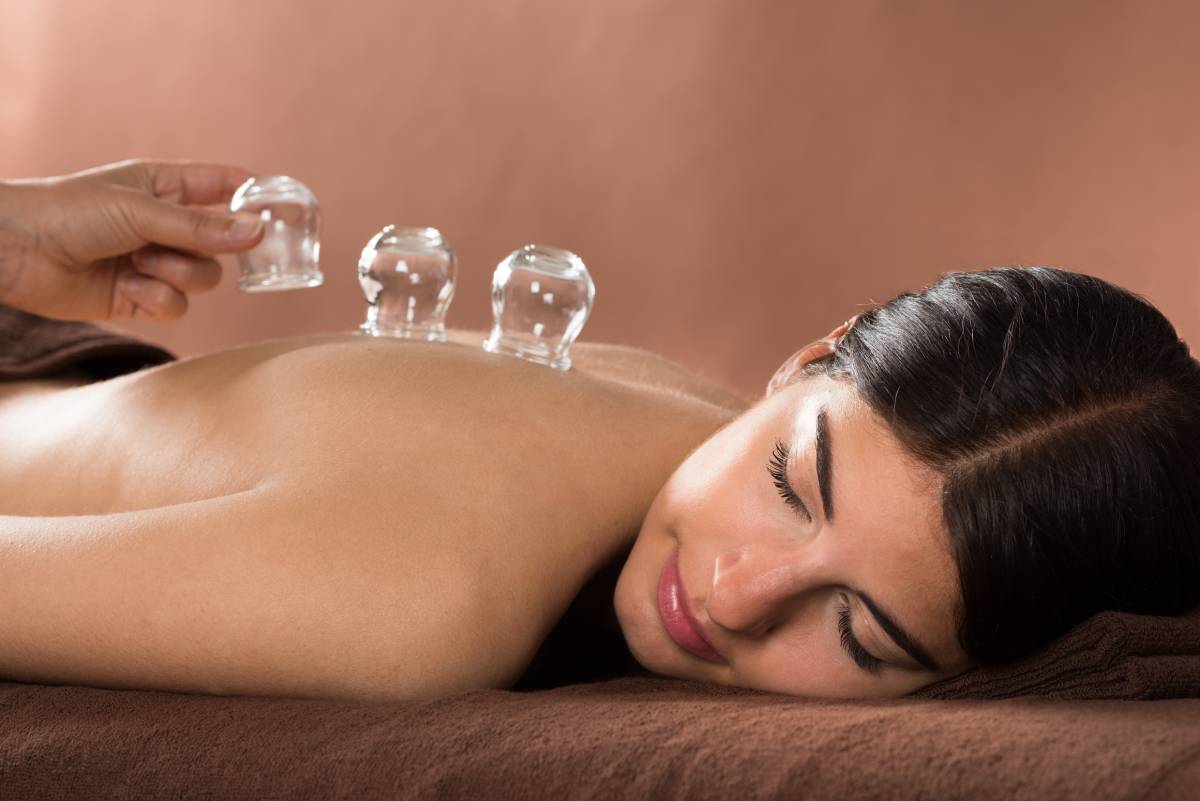Why Do Professional Athletes Use Cupping Therapy?

Cupping is a form of traditional medicine that has been a feature of medical systems across the Middle East, Asia, and Europe for thousands of years [1]. Due to the use of the technique by professional athletes, perhaps most notably by swimmer Michael Phelps during the 2016 Olympics, cupping has gained popularity [1, 2]. It has a wide variety of alleged benefits, but the degree to which science has corroborated these benefits is unclear [1]. This article will explore why professional athletes have increasingly turned to cupping therapy, and whether their decisions to do so are supported by scientific evidence.
There are at least ten different forms of cupping therapy [3]. They differ from one another in terms of the type of cup used (such as bamboo, glass, or other materials), strength of suction and temperature of the cups [1]. The most common form of cupping occurs when heat creates suction that anchors each cup to the patient’s skin [1]. Besides heat, suction can also be created by electrical or mechanical pumping [1].
Some of the purported benefits of cupping therapy include reduced pain, improved muscular regeneration, and aligned blood flow [1, 3]. Various experiments have been conducted, some of which featured professional athletes as their subjects, to test whether these effects are substantiated. Cramer et al. found that sufferers of chronic neck pain reported lessened functional disability and pain intensity, and greater physical quality of life, after receiving cupping therapy [4]. Kim et al. compared cupping with heating pads and found the former to be a more effective means of improving neck pain and function at three and seven weeks following treatment [4]. Moura et al. also reported that a meta-analysis suggested cupping had positive impacts on chronic back pain: patients who received cupping therapy experienced less pronounced lower back and cervical pain than those who received no treatment at all [4].
Despite these positive findings, significant evidence pointing to the inefficacy of cupping also exists. For instance, Williams et al. found that cupping has no distinguishable effect on college soccer players’ hamstring injuries compared with no treatment at all [5]. Furthermore, evidence remains unstandardized, with important factors such as follow-up times, techniques, and sample sizes differing across experiments [4]. An analysis that combined all randomized controlled trials on cupping therapy from the inception of several online databases to December 2016 found no clear consensus on whether cupping is an advisable form of therapy for athletes [1].
Complicating matters, athletic trainers may not have a complete understanding of the research on cupping therapy for use by professional athletes. Cage et al. found that, among 45 athletic trainers who answered questions related to the effects of cupping, trainers answered the questions with less than a 75% accuracy rate on average [6]. The trainers lacked knowledge on topics such as when to prescribe cupping therapy [6]. While the rate of adverse events associated with cupping therapy is low, misapplication of the technique may keep athletes from using more robust recovery techniques [4].
Given its prominence in the media and its diverse purported effects, it is understandable why professional athletes turn to cupping. Nevertheless, considering how cupping therapy requires further investigation, this method may not be the right approach for all of the situations in which it is used. Before trying cupping therapy, professional athletes should look for athletic trainers well-versed in the scientific literature to ensure that the treatment is appropriate for their conditions.
References
[1] R. Bridgett et al., “Effects of Cupping Therapy in Amateur and Professional Athletes: Systematic Review of Randomized Controlled Trials,” The Journal of Alternative and Complimentary Medicine, vol. 24, no. 3, p. 208-219, March 2018. [Online]. Available: https://doi.org/10.1089/acm.2017.0191.
[2] V. Williams, “Olympic Athletes and Cupping: Does It Work?,” Mayo Clinic, Updated August 8, 2016. [Online]. Available: https://newsnetwork.mayoclinic.org/discussion/olympic-athletes-and-cupping-does-it-work/.
[3] P. Mehta and V. Dhapte, “Cupping therapy: A prudent remedy for a plethora of medical ailments,” Journal of Traditional and Complementary Medicine, vol. 5, no. 3, p. 127-134, July 2015. [Online]. Available: https://doi.org/10.1016/j.jtcme.2014.11.036.
[4] D. P. Trofa et al., “The Evidence for Common Nonsurgical Modalities in Sports Medicine, Part 2: Cupping and Blood Flow Restriction,” Journal of the American Academy of Orthopedic Surgeons Global Research Review, vol. 4, no. 1, p. 1-9, January 2020. [Online]. Available: https://doi.org/10.5435/JAAOSGlobal-D-19-00105.
[5] J. G. Williams et al., “The Effects of Cupping on Hamstring Flexibility in College Soccer Players,” Journal of Sport Rehabilitation, vol. 28, no. 4, p. 350-353, December 2018. [Online]. Available: https://doi.org/10.1123/jsr.2017-0199.
[6] S. A. Cage et al., “Athletic Trainers’ Perceived and Actual Knowledge of Cupping Therapy Concepts,” The Journal of Sports Medicine and Allied Health Sciences, vol. 5, no. 3, p. 1-10, March 2020. [Online]. Available: https://doi.org/10.25035/jsmahs.05.03.06.
